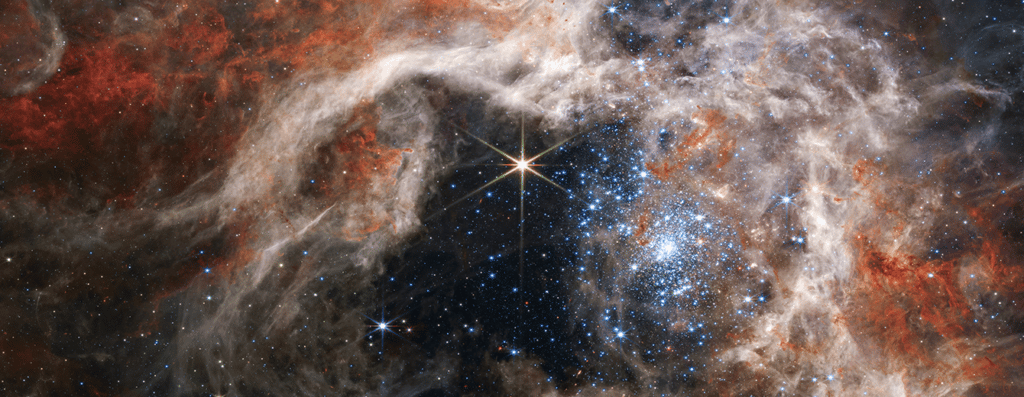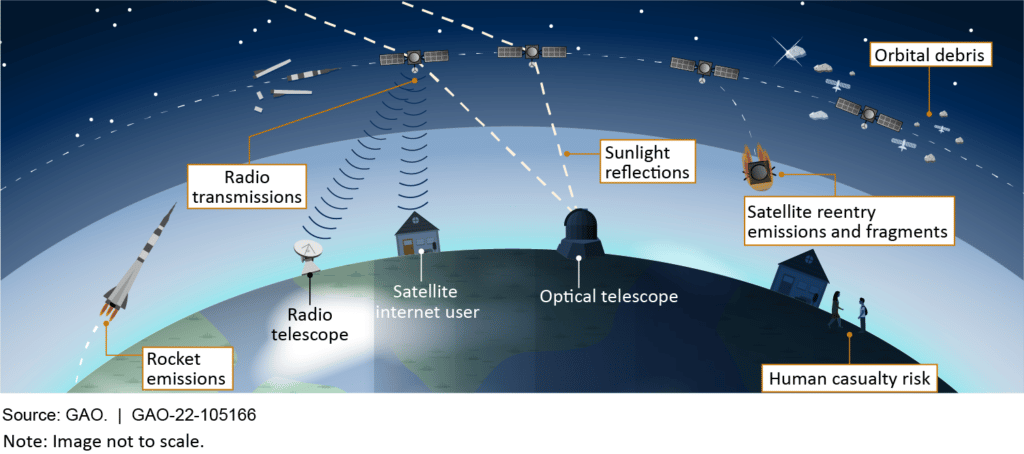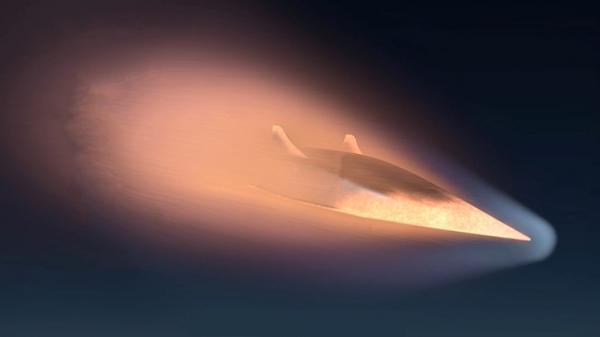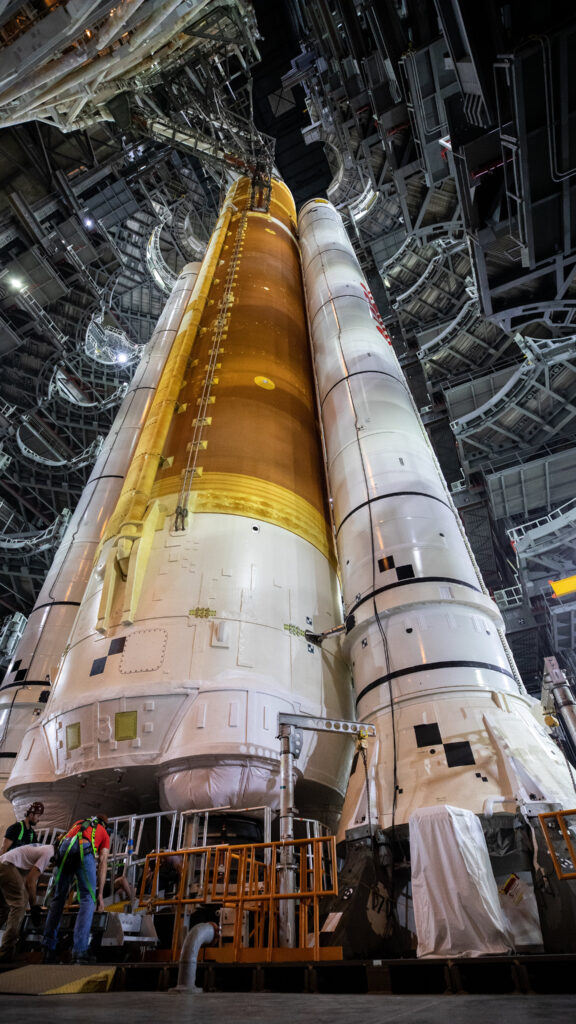
This is not a complete list of NASA space programs in development, but rather some of the largest ones.
Going Back to the Moon/Artemis Missions
NASA plans to return U.S. astronauts to the surface of the Moon in 2025 (the Artemis III mission). A variety of systems are in development to accomplish this goal, including older programs such as the Space Launch System and the Orion Crew Capsule and relatively newer lunar programs such as the Human Landing System. NASA took a significant step toward going back to the Moon in November 2022 by conducting an uncrewed flight test of the Space Launch System and the Orion spacecraft around the Moon (known as the Artemis I flight). Next up is the Artemis II flight, which will be the first crewed flight test of the Space Launch System and the Orion spacecraft around the Moon. It is scheduled for 2024 but that date is being assessed.
Space Launch System (SLS)–Heavy lift rocket designed for deep space operations. SLS Block 1 is the first version of the vehicle. It’s first launch–a test flight–was in November 2022, after a delay of more than 4 years. It’s second launch is scheduled for November 2024, but that may be optimistic. Future versions of SLS depicted below.
See our more detailed posts on SLS at:
- https://satsnaps.com/2022/03/sls-in-graphs-the-flip-side/
- https://satsnaps.com/2022/03/sls-in-graphs/
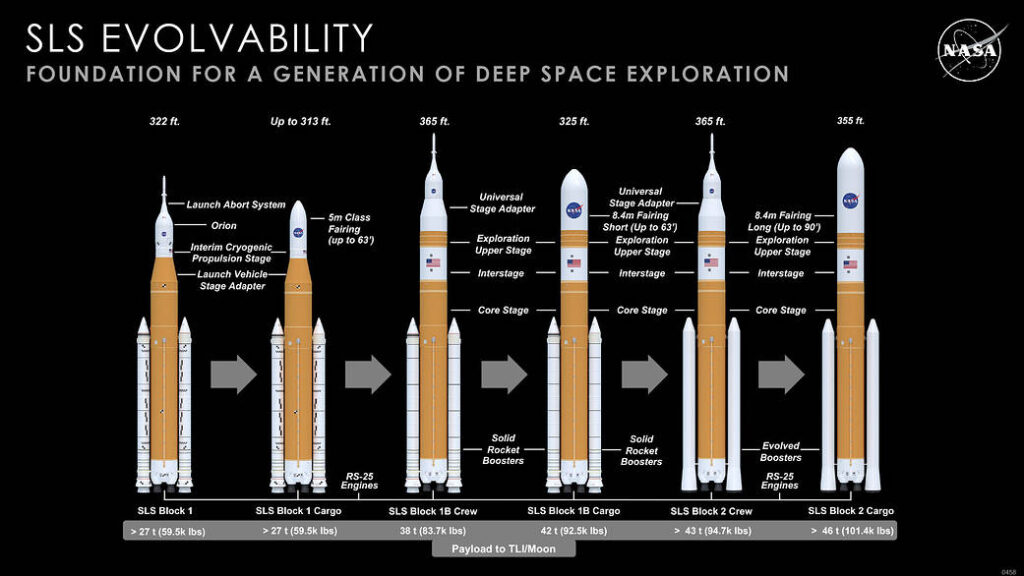
Orion Multi-Purpose Crew Vehicle–The capsule that can transport astronauts to the moon and other deep space destinations. Supported by a service module and a launch abort system. Development was started in 2006 under NASA’s Constellation program.
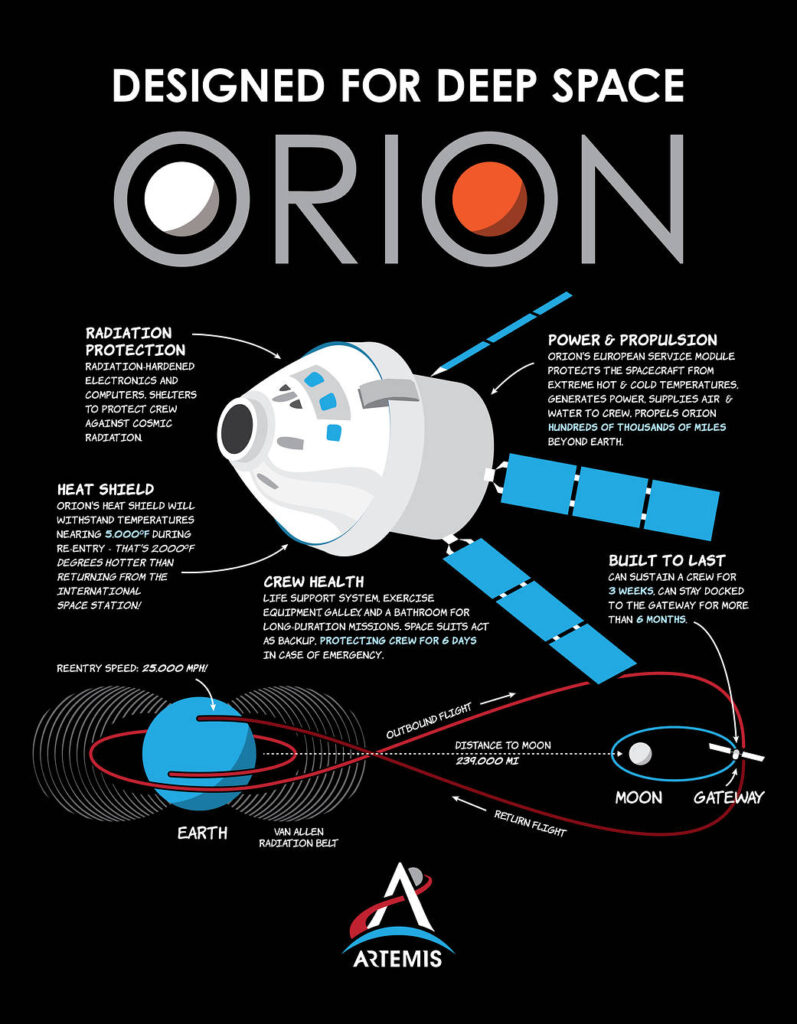
Exploration Ground Systems–Infrastructure and equipment that support the Space Launch System, including the Mobile Launcher, Crawler Transporter, Vehicle Assembly Building, and Launch Pad 39-B at Kennedy Space Center. A second mobile launcher is in development.
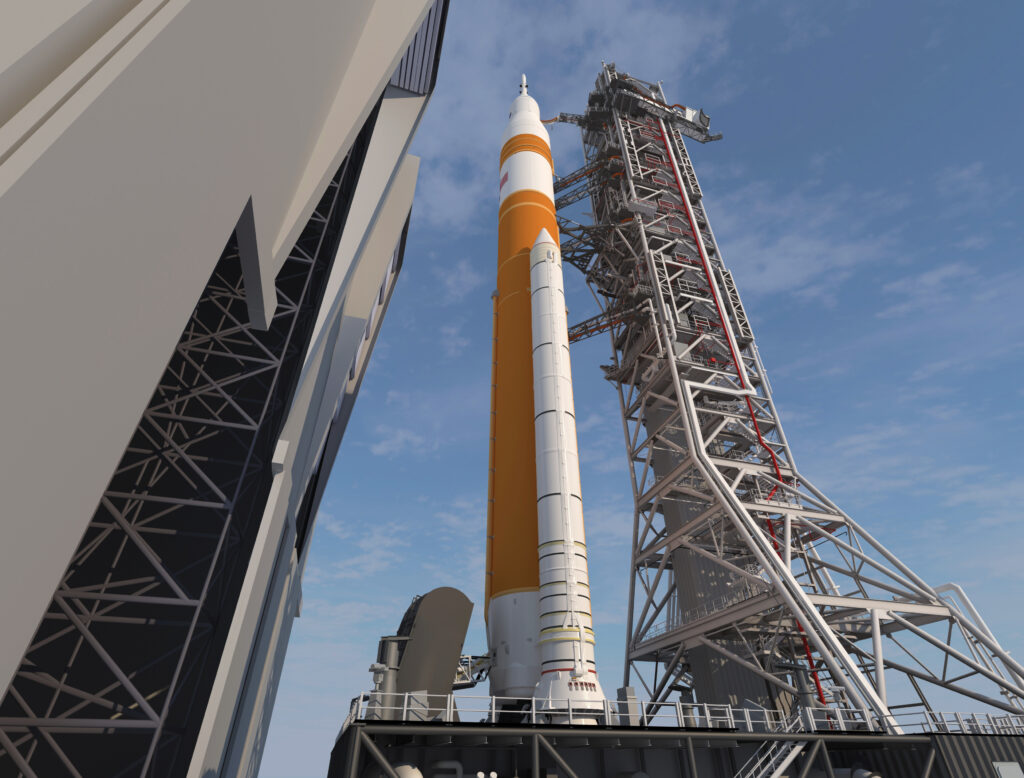
Human Landing System (HLS)–This is a newer program, started in 2019, to build a landing system to provide crew access to the moon’s surface. NASA plans to use HLS for the Artemis III mission in 2025.
Gateway–This will be a sustainable outpost in lunar orbit. The project has been broken down into several pieces for management purposes. For instance, a contract with a total value of $375 million was awarded in 2019 to develop an element to provide Gateway with power, communications, and the ability to change orbits.

Space suits–NASA is developing new space suits for the Artemis missions.
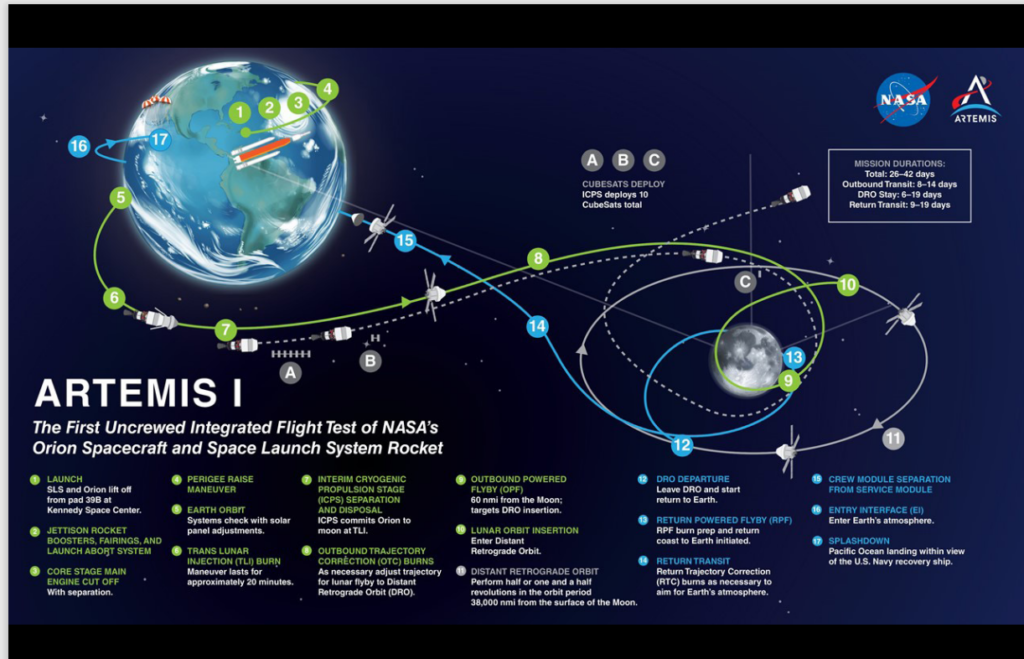
Costs for the newer lunar programs have not yet been estimated. But SLS, Orion and EGS represent some of NASA’s most significant investments.
| SLS | $11.8 billion |
| Orion | $13.8 billion |
| EGS | $3.6 billion |
Proposed 2024 budgets for lunar programs below.
| SLS | $2.5 billion |
| Orion | $1.2 billion |
| EGS | $794 million |
| Gateway | $914 million |
| Human Landing System | $1.9 billion |
For more about the lunar programs and contracts, see GAO-21-330, NASA LUNAR PROGRAMS: Significant Work Remains, Underscoring Challenges to Achieving Moon Landing in 2024
International Space Station
International Space Station–The ISS is not a development program like the others featured on this page, but it is at the center of NASA’s experimentation with more commercial-like buying. The ISS is operational and has been continuously occupied since 2000. It orbits roughly 250 miles above the Earth’s surface. Operating costs are about $3 billion a year, or one third of NASA’s annual human space flight budget. It is likely to continue operating until 2030 and moving toward use for commercial business. A recent report on the management of ISS can be found at NASA’s Management of the International Space Station and Efforts to Commercialize Low Earth Orbit. There is also a wealth of information on the ISS on NASA’s website.
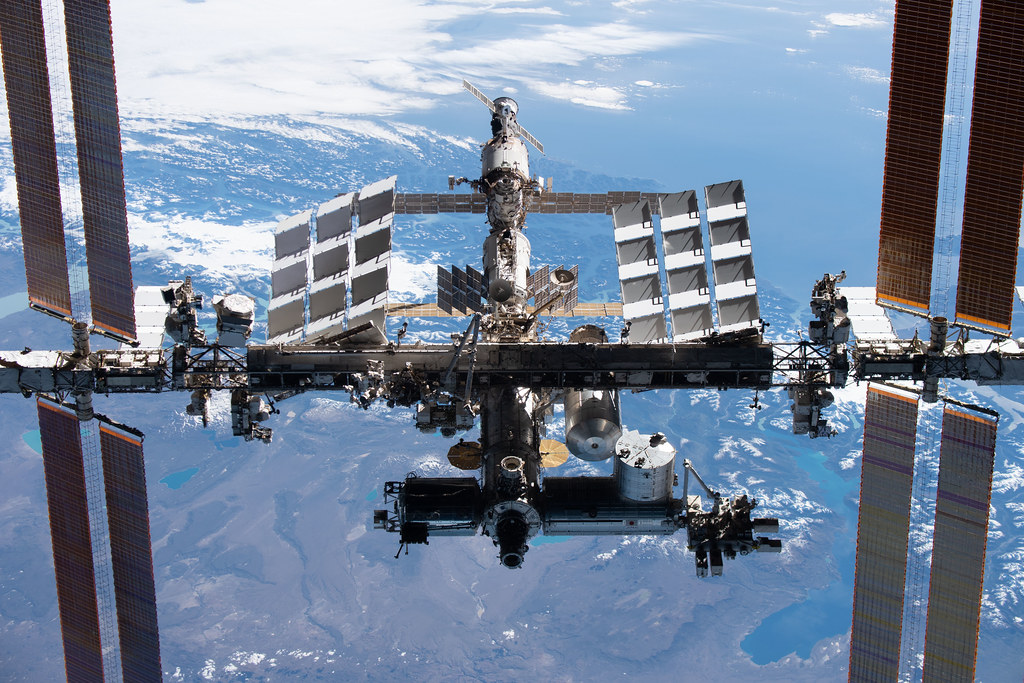
Commercial Crew Program–This program focused on developing two new vehicles that could transport NASA astronauts to and from the ISS using a different, more commercial-like acquisition approach. NASA helped fund the development of two vehicles without the level of control over design and requirements that it exerted in other efforts like SLS. The contractors, narrowed down to Space X and Boeing, worked under fixed-price contracts that made payments based on certain milestones being met. NASA does not own the vehicles. Rather, once they are certified, NASA buys astronaut flights as a transportation service. The SpaceX system has been certified and is transporting astronauts. The Boeing system has not been certified yet, as it encountered significant problems in the late phases of its development.
| Boeing contract value | $4.5 billion |
| SpaceX contract value | $2.7 billion |
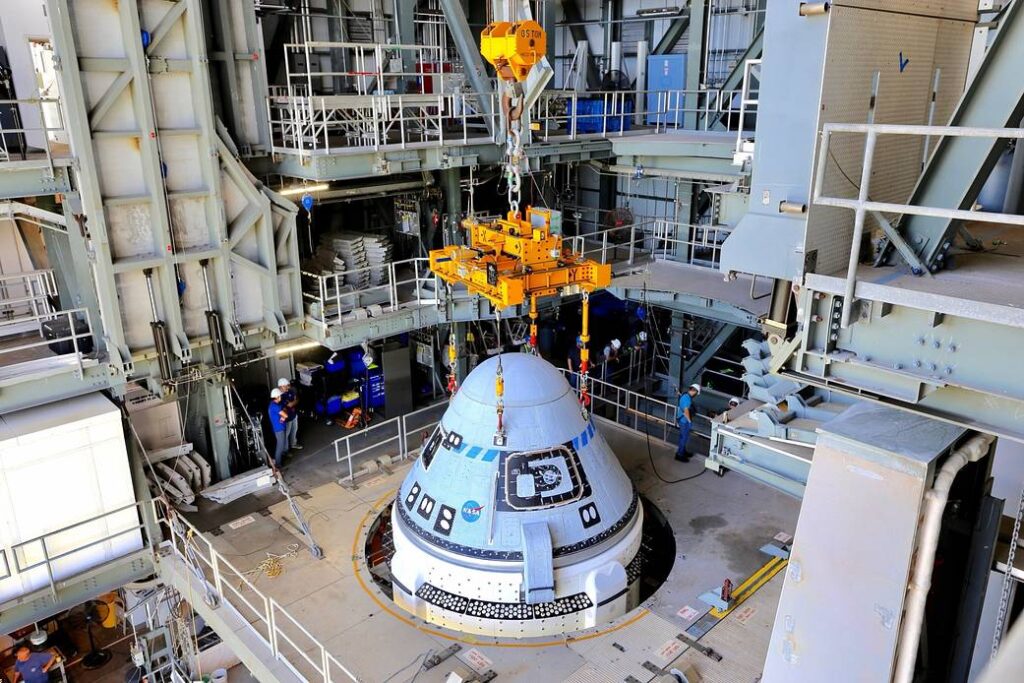
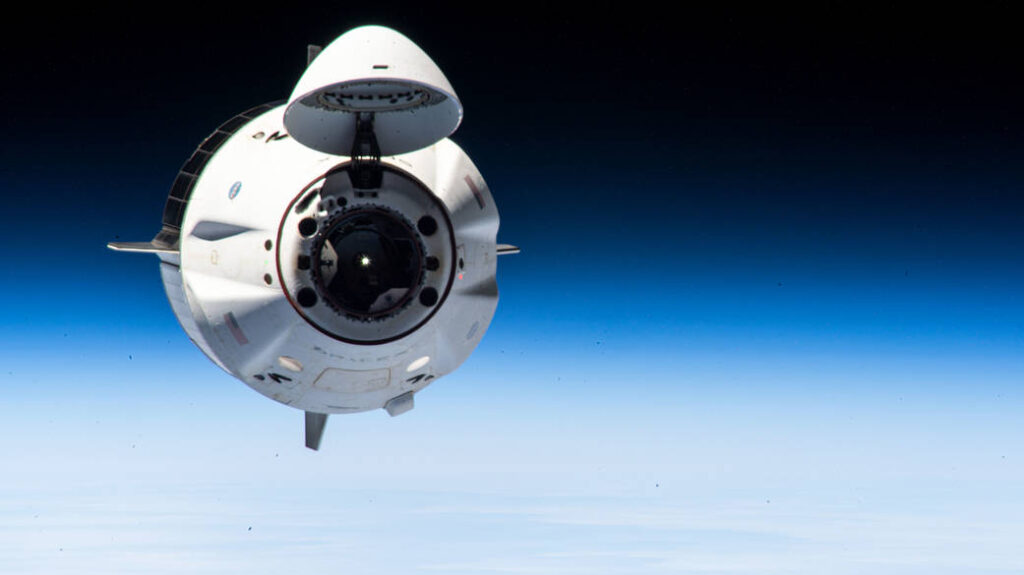
Commercial Cargo/Resupply –Prior to Commercial Crew, NASA focused on developing new vehicles that could bring cargo to the ISS following the same commercial approach described above. Two providers have been delivering cargo: SpaceX and Northrop Grumman (which acquired Orbital Sciences, the company that developed the Cygnus vehicle used to transport cargo). Another provider, Sierra Nevada Corporation, has been awarded commercial resupply contracts, but the Dream Chaser vehicle is still in development.
To learn more about the cargo program and the experiences with following a new commercial-like buying approach, see Commercial Orbital Transportation Services (nasa.gov).
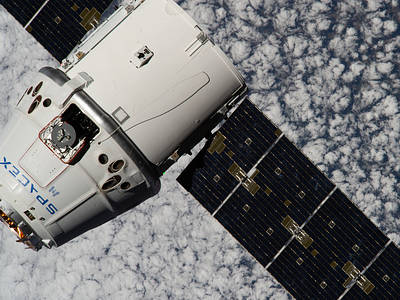
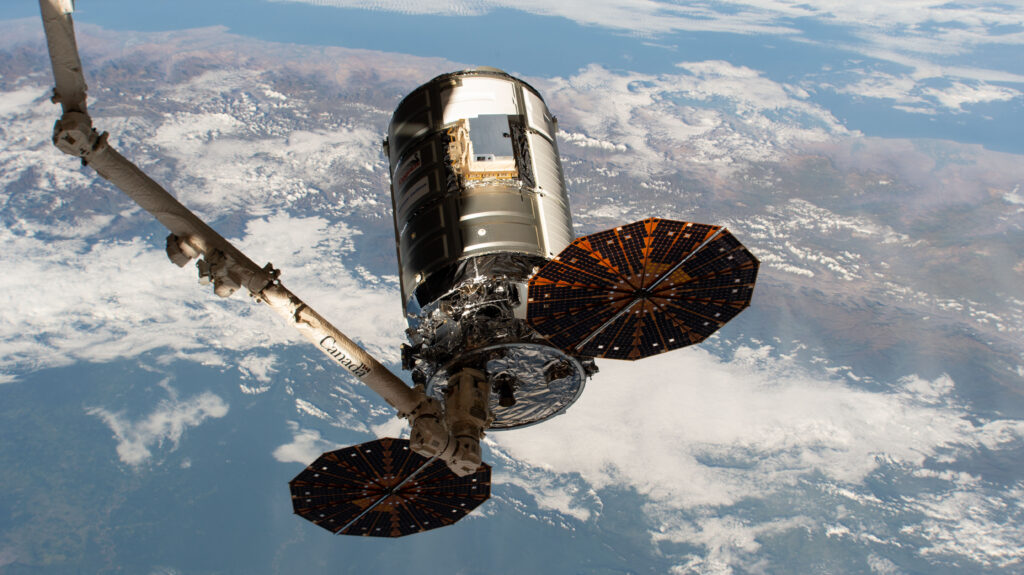

NASA Science Programs
James Webb Telescope (JWST)–The recently launched and successfully deployed James Webb Telescope is among the most expensive (nearly $10 billion) and challenging NASA has developed. The telescope will be the premier observatory of the next decade. It will study every phase in the history of the Universe, even the Big Bang. One of the telescope’s innovative technologies is an 18-segment primary mirror that are made of beryllium. The telescope is protected by a tennis court sized five-layer sunshield.
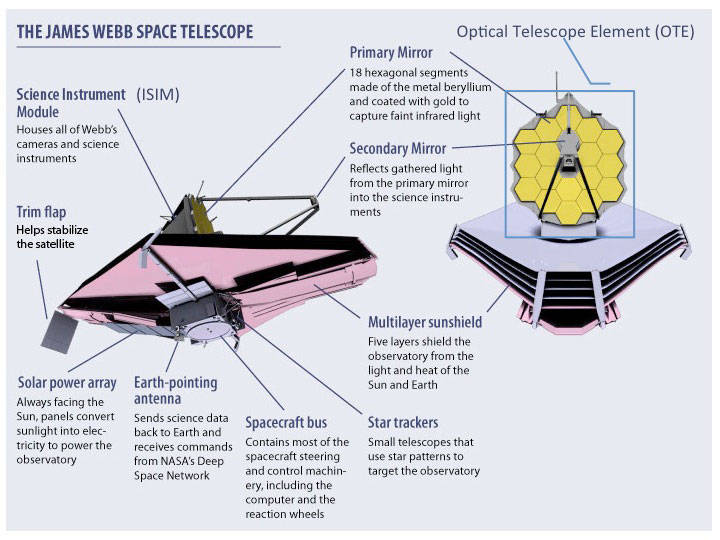
Nancy Grace Roman Space Telescope–(Formerly, WFIRST) This is NASA’s next big telescope, designed to unravel the secrets of dark energy and dark matter, search for and image exoplanets, among other uses. The telescope is not being built from scratch. NASA is modifying a space telescope that was originally built and qualified by another federal agency. GAO recently reported that costs have climbed to $4.3 billion.

See more detailed post at https://satsnaps.com/2022/07/nasas-next-big-telescope/
SPHEREx–Spectro-Photometer for the History of the Universe, Epoch of Re-ionization and Ices Explorer. This mission will survey the sky in optical and near-infrared light to gather data on more than 300 million galaxies. Launch planned for 2025.
IMAP–Interstellar Mapping and Acceleration Probe. IMAP will chart and study the boundaries of the heliosphere. Launch planned for 2025.
Europa Clipper–This spacecraft will be placed in orbit around Jupiter in order to perform a series of flybys of the Jupiter’s moon Europa to see whether the icy moon can harbor conditions suitable for life. Launch planned for 2024.
Dragonfly–Dragonfly will study the largest moon of Saturn, Titan, using a rotocraft carrying science instruments. It is believed that Titan may harbor an interior ocean. Launch is planned for no earlier than 2027.
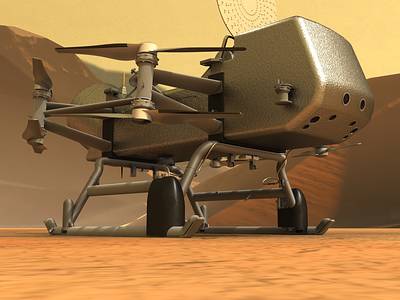
Mars Sample Return–This mission is focused on retrieving and returning samples from Mars. It will include two landers and an orbiter. This will be NASA’s first round-trip to another planet. Preliminary plans call for a launch of the orbiter in 2027 and the landers in 2028.
NEO Surveyor--A telescope being developed to identify and characterize near earth objects that could pose a danger to the Earth. Launch expected in 2026.
VERITAS–This spacecraft will map Venus’s surface and interior to understand why it developed differently than the Earth. Preliminary launch date is 2028.
DAVINCI–Venus explorer expected to launch no later than 2030. A spacecraft will conduct two fly-by missions before releasing a probe into the Venus atmosphere. No preliminary cost estimate yet but NASA budget shows requests adding up to more than $900 million through FY 28.
Psyche–Psyche is an asteroid mission that was expected to be launched by August 2022, but the launch was delayed due to technical challenges. NASA is now planning on launching Psyche in October 2023. The asteroid Psyche is unique in that it appears to be the exposed nickel-iron core of an early planet, one of the building blocks of our solar system, according to NASA.
Commercial Lunar Payload Services (CLIPS)–CLIPS is not a traditional development program. Rather NASA is working with several US companies to transport science and technology to the lunar surface. It will acquire transportation to the moon as a service. CLIPS providers include Blue Origin, Firefly Aerospace, Lockheed Martin, Masten Space Systems, Moon Express, Sierra Nevada Corporation, SpaceX, Astrobiotic Technology, Ceres Robotics, Deep Space Systems, Draper, Intuitive Machines, Orbit Beyond and Tyvak Nano-Satellite Systems.
Volatiles Investigating Polar Exploration Rover (VIPER)–VIPER is a robotic lunar rover that will search for water ice and other potential volatile resources. Launch planned for 2024.
Radioisotope Power–This is a technology development effort in partnership with the Department of Energy. Radioisotope power systems are used to power spacecraft in deep space.
Plankton, Aerosol, Cloud, ocean Ecosystem (PACE)–PACE is a polar-orbiting mission that will use advanced remote sensing instruments to better understand how the ocean and atmosphere exchange carbon dioxide and how aerosols might fuel phytoplankton growth in the surface ocean. Launch in 2024.
Surface Water and Ocean Topography (SWOT)–SWOT will evaluate the world’s oceans and their role in climate change, as well as monitor lakes, rivers, and other surface waters. It is being developed jointly with France with contributions from Canada and the United Kingdom. SWOT launched in December 2022.
NASA/Indian Space Research Organization Synthetic Aperture Radar (NISAR)–NISAR will study the solid Earth, ice masses, and ecosystems through advanced radar imaging. Launch in 2024.
Landsat 9–Landsat is a joint mission between NASA and the U.S. Geological Survey. Landsat satellites have been in orbit since 1972, collecting data on forests, farms, urban areas and freshwater. Landsat-9 was launched September 2021.
Sentinel 6–This is the second of two satellites that will take ocean topography measurements. The satellites build on earlier missions. Launch planned for 2026.

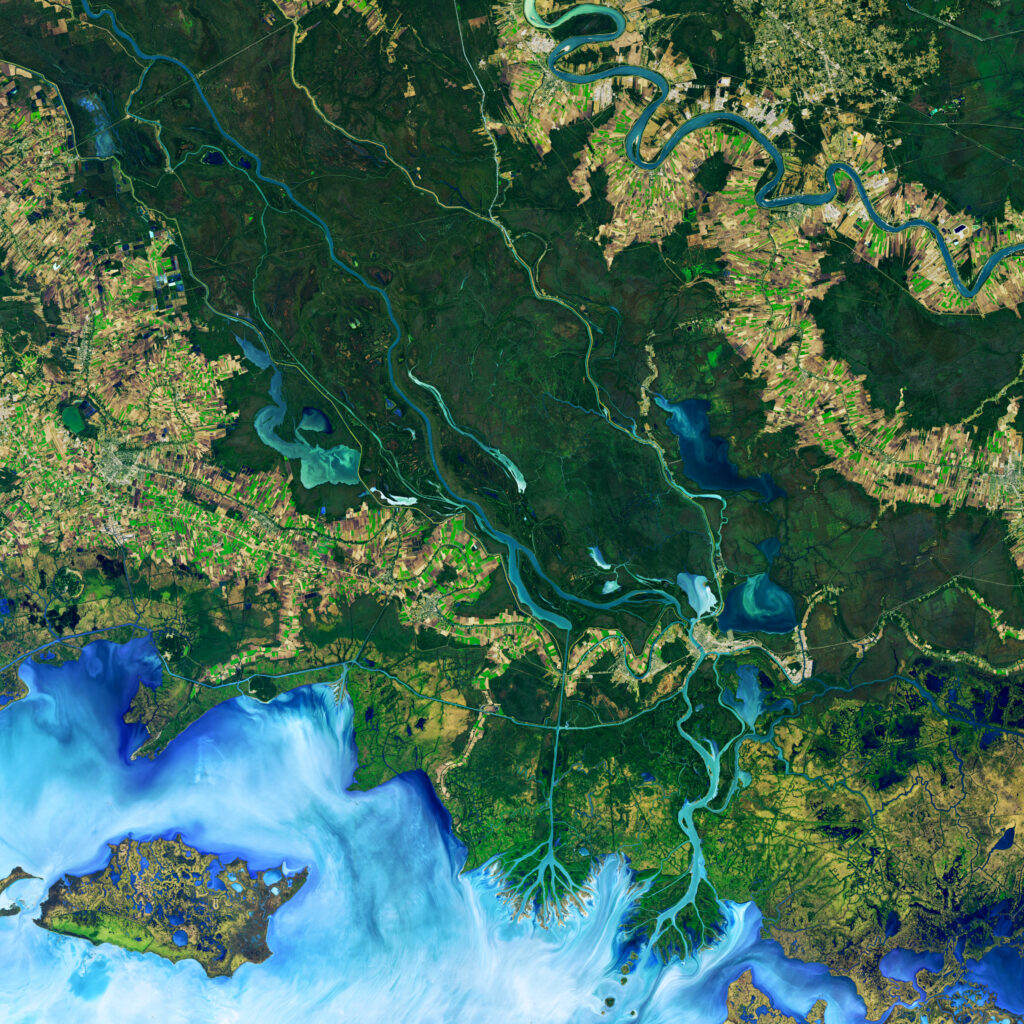
Joint Polar Satellite System (JPSS)–JPSS is the new generation of polar-orbiting weather/environmental monitoring satellites. They are developed by NASA in collaboration with the National Oceanic and Atmospheric Administration (NOAA). The next satellite to be launched is JPSS-2.
Also see our page on weather satellites. https://satsnaps.com/weather-satellites/
Science programs in development with highest costs below
| Europa Clipper | $5 billion |
| Nancy Grace Telescope | $4.3 billion |
| Mars Sample Return | $3.4-$4.9 prelim estimate |
| NISAR | $971 million |
| Psyche | $965 million |
| PACE | $964 million |
| NEO Surveyor | $896-991 million prelim esti |
| SWOT | $822 million |
| IMAP | $781 million |
| SPHERE-X | $451 million |
| VIPER | $433 million |
Science programs with highest proposed budgets for 2024. This includes some systems that have transitioned to operations.
| Mars Sample Return | $949 million |
| Nancy Grace Telescope | $407 million |
| Dragonfly | $328 million |
| Europa Clipper | $303 million |
| NEO Surveyor | $210 million |
| James Webb (operations) | $187 million |
| Radioisotope Power | $175 million |
| IMAP | $140 million |
| NISAR | $96 million |
| Hubble telescope (operations) | $93 million |
| PACE | $91 million |
See NASA Science Missions | Science Mission Directorate for a thorough list of all, past, operational, and future missions.
Other
On-Orbit Servicing, Assembly and Manufacturing 1 (OSAM-1)–This project plans to demonstrate a capability to autonomously refuel and extend the life of on-orbit satellites. These capabilities have the potential to give satellite operators new ways to manage their fleets more efficiently and help mitigate the looming problem of orbital debris, according to NASA. OSAM is expected to cost about $1.8 billion.
Solar Electric Propulsion (SEP)–SEP is a technology demonstration effort. With SEP technology, large solar cell arrays convert sunlight to electrical power.
Electrified Powertrain Flight Demo (EPFD)–This is a technology demonstration effort focused on maturing an integrated megawatt-class electrified powertrain systems and components for commercial aircraft.
Low Boom Flight Demonstrator--Flight demonstration project to show that noise from supersonic flight can be reduced to levels acceptable to the public for commercial aircraft use.
| System | Total cost | 2024 Budget |
| OSAM | $1.9 billion | $227 million |
| SEP | $382 million | $10 million |
| EPFD | $311-469 million prelim | $87 million |
| Low Boom | $697 million | $33 million |
For more information on the cost, schedule and performance of all of NASA’s major projects, see GAO-22-105212, NASA: Assessments of Major Projects

